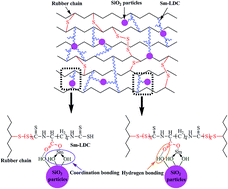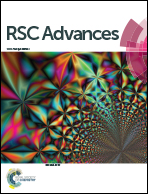Effect of multifunctional samarium lysine dithiocarbamate on curing properties, static and dynamic mechanical properties of SBR/silica composites
Abstract
In this work, a novel multifunctional rubber agent named as samarium lysine dithiocarbamate (Sm-LDC) was synthesized by a nucleophilic addition reaction and coordination reaction. Then the influences of Sm-LDC on curing properties, and static and dynamic mechanical properties of SBR/SiO2 composites were studied. The results showed that Sm-LDC is not only capable of accelerating the vulcanization of SBR compounds even without zinc oxide (ZnO) and stearic acid (SA), also conducive to improve the crosslinked network. Notably, SBR/Sm-LDC/SiO2 composites exhibit superior static and dynamic mechanical properties in comparison with the SBR/SiO2 composite containing conventional accelerator zinc diethyl dithiocarbamate (ZDC), and activators ZnO and SA. Such improvement is attributable to the improved dispersion of SiO2, the enhanced filler–rubber interaction, and the high vulcanization and reinforcing efficiency of Sm-LDC. Accordingly, the excellent comprehensive performance may make Sm-LDC very competitive in the application in green tires and the preparation of high performance rubber composites.


 Please wait while we load your content...
Please wait while we load your content...